Design Problem
Social cohesion is one of the most difficult problems to categorise, because it manifests in so many ways. One of the elements that creates social exclusion is unequal access to resources and inequality in the built environment, with underprivileged communities in very close proximity to privileged communities.
The chosen site in Gesr El Suez is split by both physical and social barriers into three distinct areas; planned settlements within the industrial area, informal agricultural villages and the New Nozha planned area. The informal settlements are hidden behind factory spaces so are not visible from the main street, with some people in the surrounding areas unaware of their existence. The planned settlements are of similar social class but are split physically by Gesr El Suez Street and the Josef Tito highway.
The informal settlements (Birket El Hajj, Ezbet El Nakhl, Al Rashah and Kafr Abu Sir) used to be agricultural villages up until the 1990’s but have quickly lost their agricultural identity when the land owners built concrete and red brick buildings upon their agricultural land. These areas suffer from poor sanitation and lack of waste management, limited access to food and what food is grown there is often irrigated with raw sewage so making the produce unsafe to eat, the sewage filling vegetables with heavy metals and pathogenic bacteria.
The planned settlements are built very close to industrial areas containing factories, workshops and warehouses. These areas suffer from an extremely high level of pollution, causing health problems for the residents. To combat this, the residents have started planting balconies and what open space is available, and Gesr El Suez Street is lined with roadside plant nurseries. Since these areas are perceived as affluent food prices are often hiked up considerably, compared to prices in supermarkets. Residents have complained about the cleanliness of the area and the high levels of pollution, with additional green areas the most requested improvement to the area.
To help remedy these problems, an urban agriculture centre will be built to help provide clean, safely grown foodstuffs to the surrounding areas. This centre will also act as a connection between the aforementioned areas, containing community activities and giving people an opportunity to mix and interact, and also acting as an attraction point for other visitors.
Mission Statement
To build civic infrastructure for urban farming on borders between privileged and underprivileged areas, aiming to increase social cohesion, food security, local resilience and self-sufficiency.
To use the profits from the farm to start a rooftop farming initiative in informal settlements as a source of income and clean food.
INCUBATION: SITE ANALYSIS
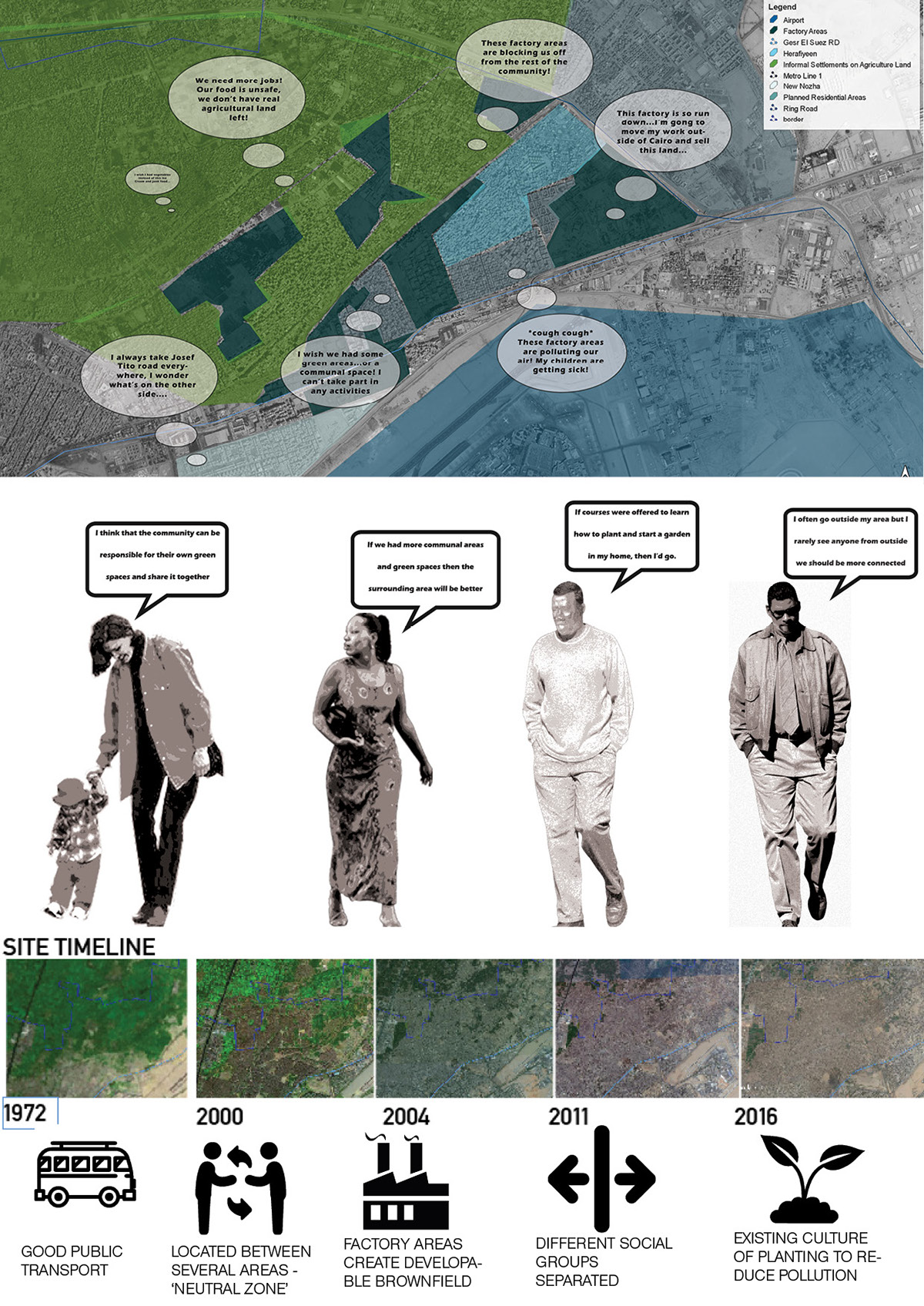

The main sources of income are from investors and the government buying plants that are not usually planted such as medicinal plants and phytochemicals. Companies can also rent office space within the building and request particular crops.
The largest running cost is energy, which is offset by the solar farm. The project is non-profit, the proceeds go to fund the second phase of the project which is installing rooftop farms in underprivileged communities to help create a source of income for them and reclaim the old agricultural land.




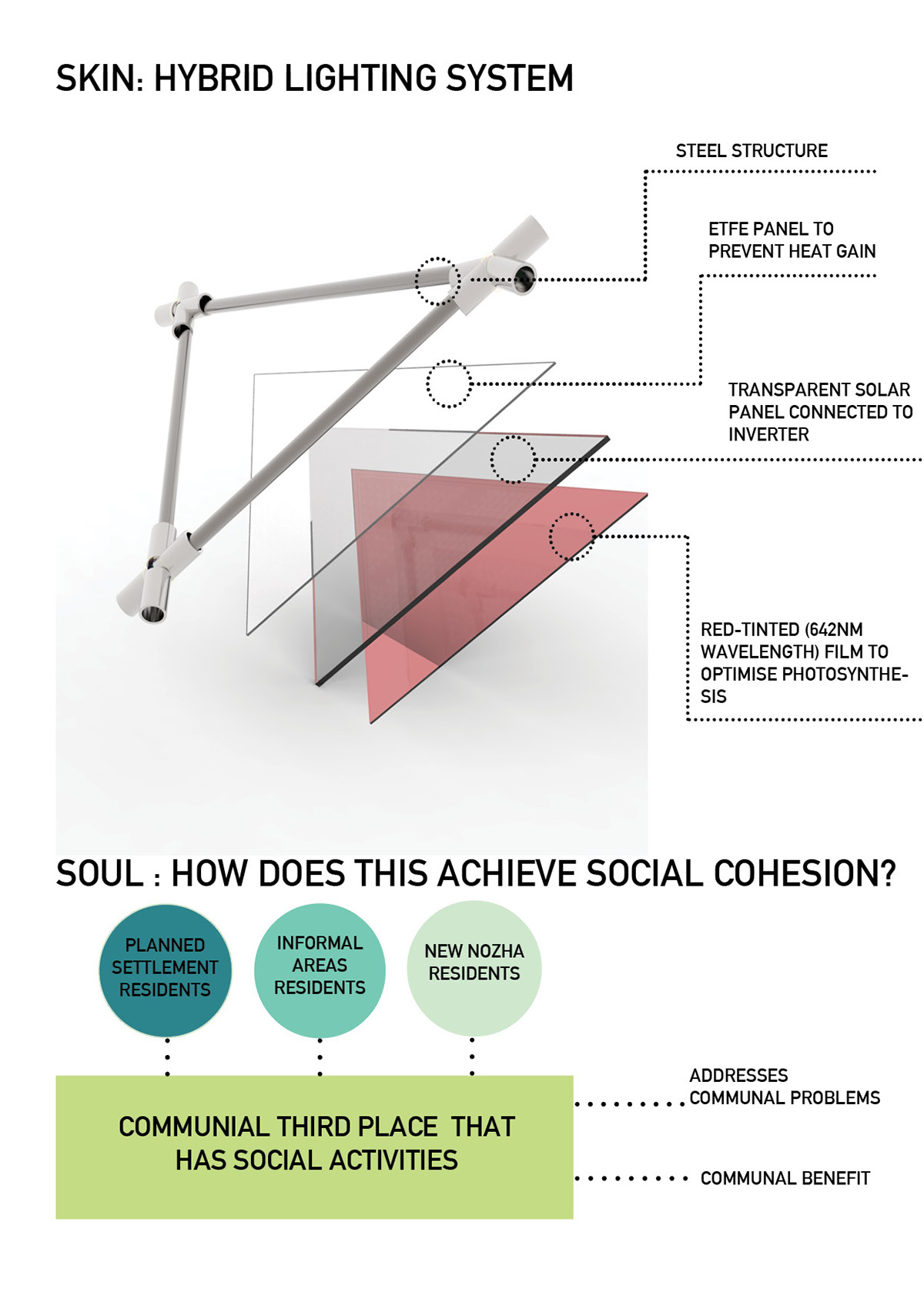


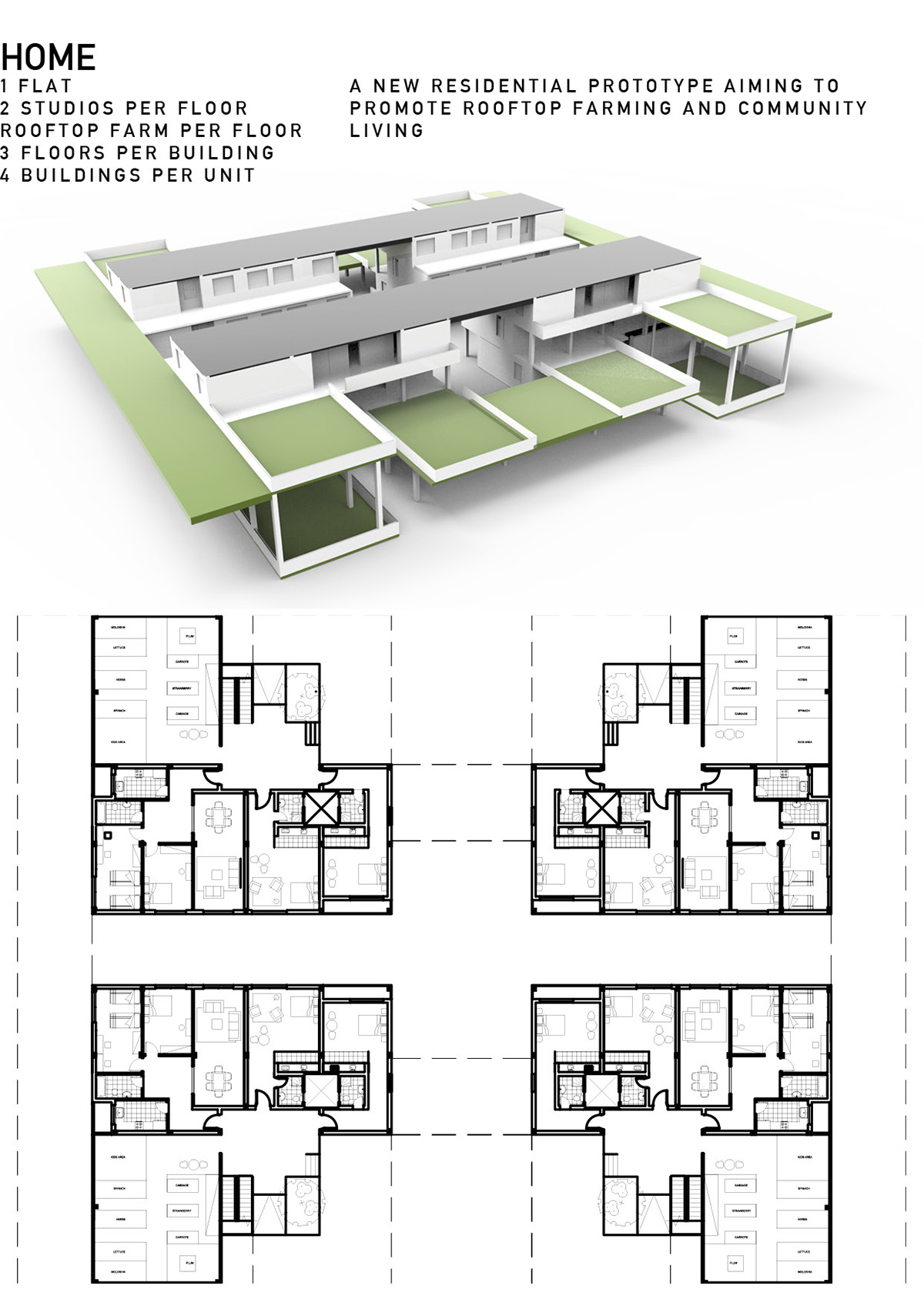
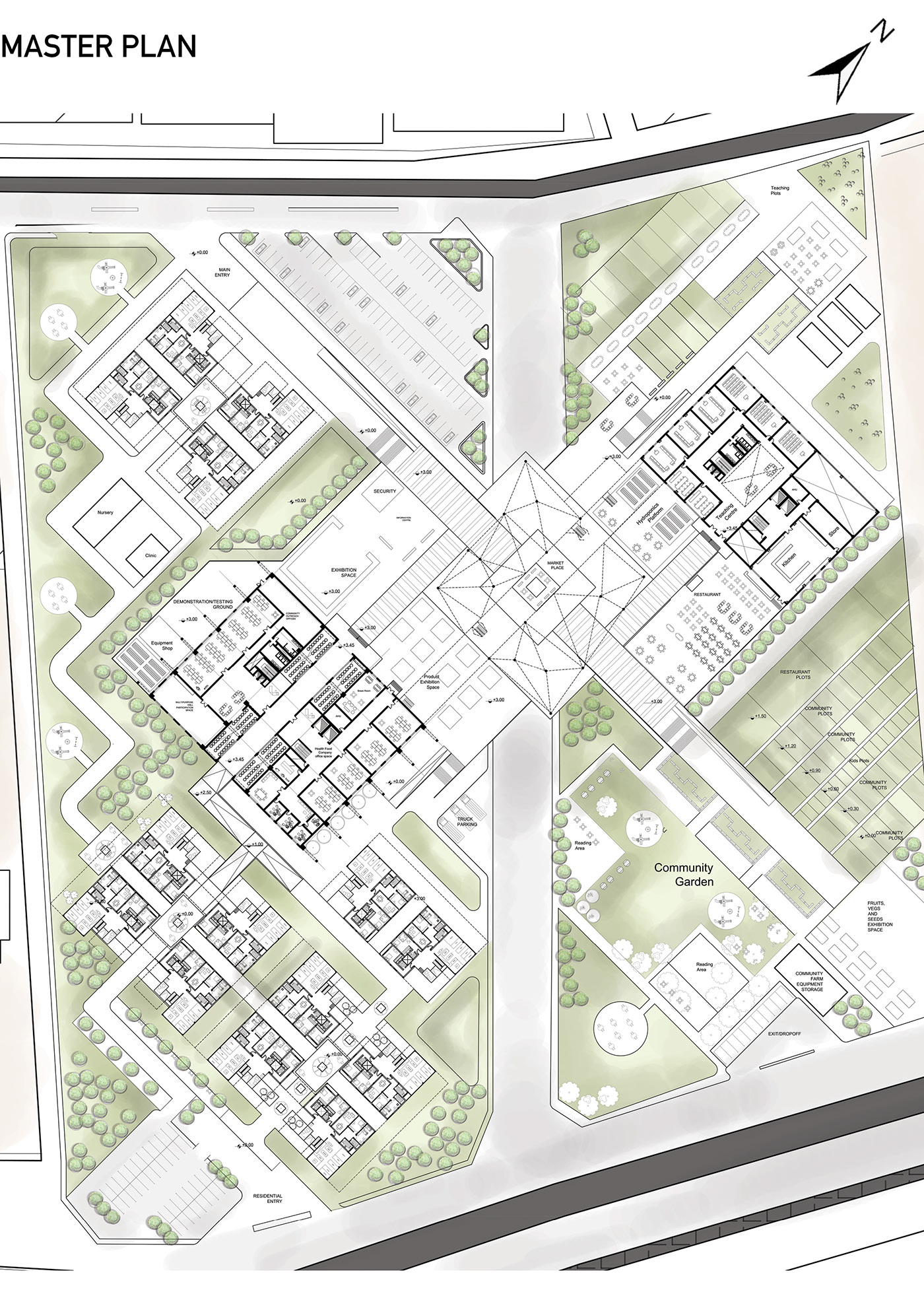



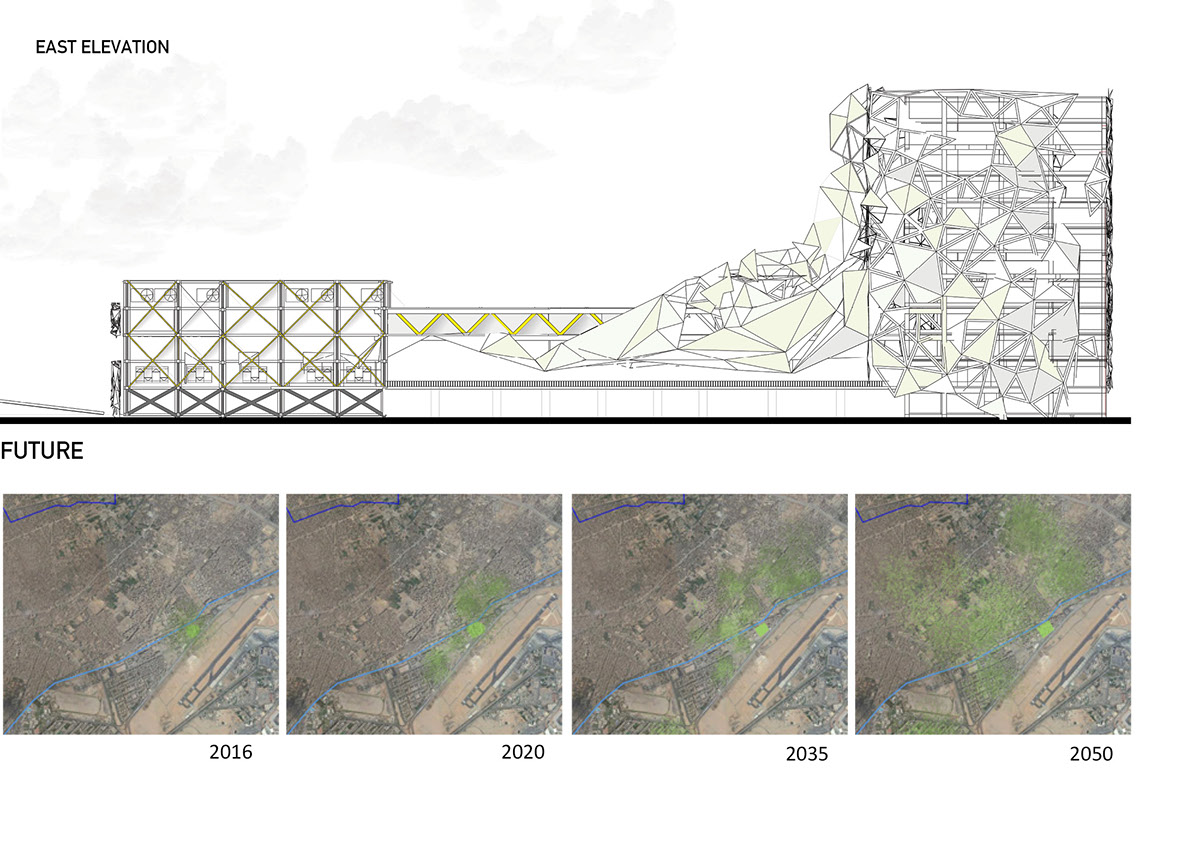
In the future, the project can be used as a hub to introduce rooftop farming and sustainable living to the surrounding area, starting to reclaim the lost agricultural land and address the rising air pollution and unsafe growing practices. The implementation of rooftop farms can:
-Create a source of income for underpriviliged communities
-Rooftops become communal spaces
-Improves food security and environment
-Brings up the whole area socially and economically

